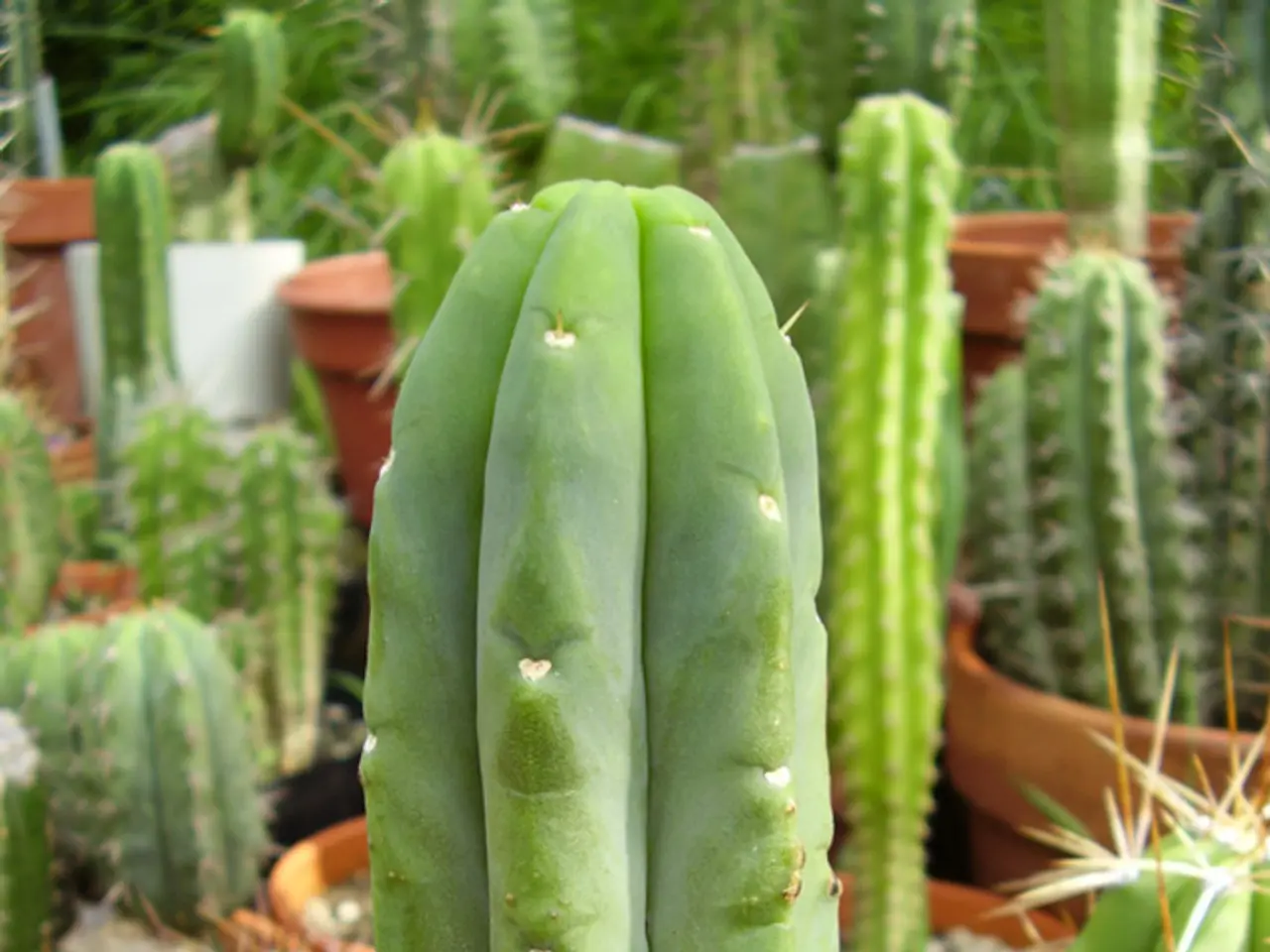Plant Counterattacks Unleashed!
In the ongoing battle between plants and herbivores, plants have developed an array of sophisticated defense mechanisms to protect themselves. These strategies range from physical barriers to chemical compounds, all designed to deter potential predators.
One common physical defense is the use of thorns. Thorns are pokey extensions that are live wood, born from modified stem tissue, and can be found on trees like acacia, Russian olive, and honey locust. These sharp structures can injure or deter larger herbivores, providing a formidable barrier.
Another defense mechanism is the use of trichomes, tiny hairs found on the surface of plants. These can be glandular, releasing sticky substances, or non-glandular, making it difficult for insects or small herbivores to move or feed. Dense trichomes on the woolly plantain in Nunn, Colorado, for instance, deter insects from the plant's leaf surfaces. Some plants, like sensitive plants (genus Mimosa), even employ thigmonasty, a defense mechanism that causes the leaves to curl up when touched or vibrated, swiftly flinging off tiny insects that might seek to chomp into it.
Waxes and cuticles form protective outer layers on plants, reducing accessibility and palatability. These structures act as a first line of defense, making it harder for herbivores to feed on or damage the plant tissue.
Grasses have also developed indigestible silica into their tissues to reduce palatability and increase wear on herbivores' teeth and mandibles. Some grass species have seeds equipped with variably long, sharp, and bristly awns that can become painfully embedded in an herbivore's body.
In addition to direct physical barriers, plants can emit volatile organic compounds (VOCs) when under stress. These compounds can serve to alert neighboring plants or attract natural predators of herbivores, representing an indirect defense mechanism.
Plants have evolved delightfully sophisticated defense systems, such as formulating noxious chemical compounds and putting up pokey barricades. The Red Queen hypothesis in evolutionary biology suggests that species must adapt and evolve to simply live and reproduce. This arms race applies to plants as well, with plants employing adaptations to deter being eaten.
For example, the genus of succulents native to southern Africa called Lithops has evolved to resemble a mere pebble on the ground, camouflaging themselves. Plants endemic to coasts and dunes may exude sticky glandular secretions that catch blowing sand, allowing them to blend into the scenery. Spotted spurge (Euphorbia maculata) camouflages among a gravel pathway.
In conclusion, plants utilize a combination of physical barriers like thorns and trichomes, often integrated with chemical and signaling responses, to effectively deter herbivores. This ongoing battle between plants and herbivores continues to drive the evolution of both, resulting in ever more complex and intricate defense systems.
References: [1] Kessler, A., & Baldwin, I. T. (2001). Signaling between plants and their natural enemies. Annual Review of Ecology and Systematics, 32, 483-512. [3] Dicke, M., & Baldwin, I. T. (2003). Volatiles as plant signals: the role of herbivore-induced plant volatiles in plant-plant signaling and plant defense. Trends in Plant Science, 8(5), 218-224.
- Arts and lifestyle events often showcase home-and-garden exhibitions, featuring various plants that have evolved complex defense mechanisms to protect themselves from herbivores.
- In some cities, urban gardening initiatives encourage residents to plant species with natural defenses, such as thorny acacia trees or those with densely packed trichomes, to naturally deter pests and herbivores in home-and-garden settings.
- Apart from serving as an interesting topic for the study of evolution, the ongoing battle between plants and herbivores in the environment also presents opportunities for the arts, with artists being inspired by the intricate defense systems found in nature, such as the camouflage techniques used by succulent plants like Lithops.




